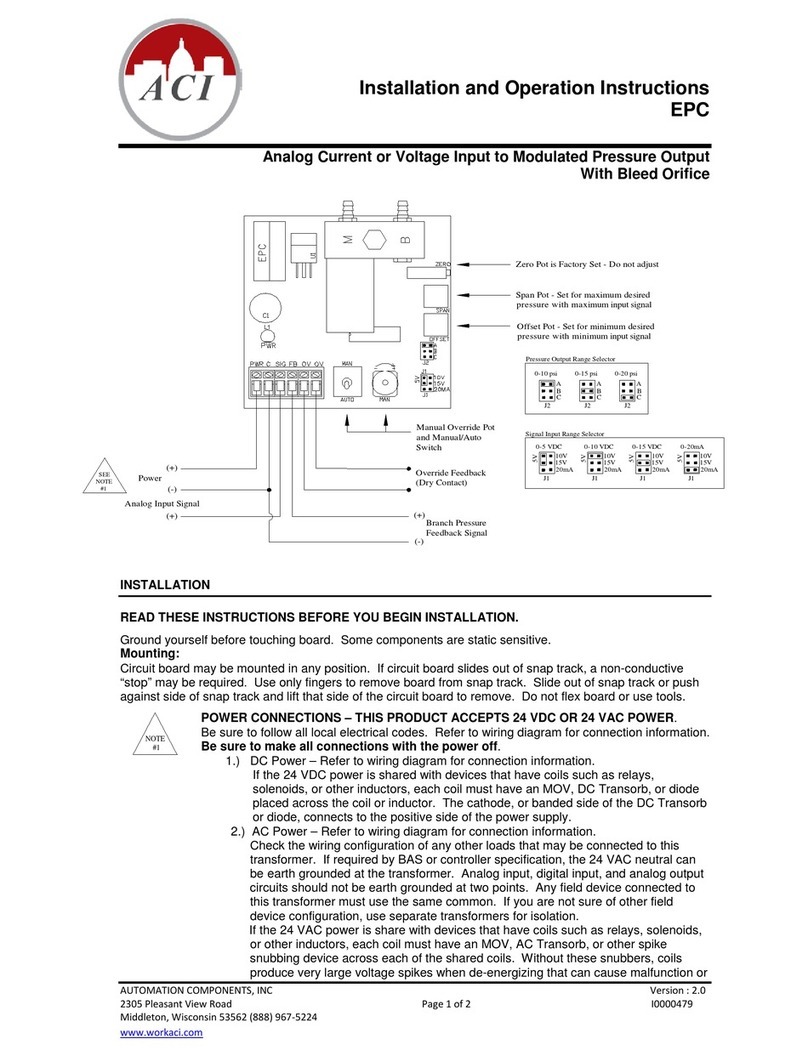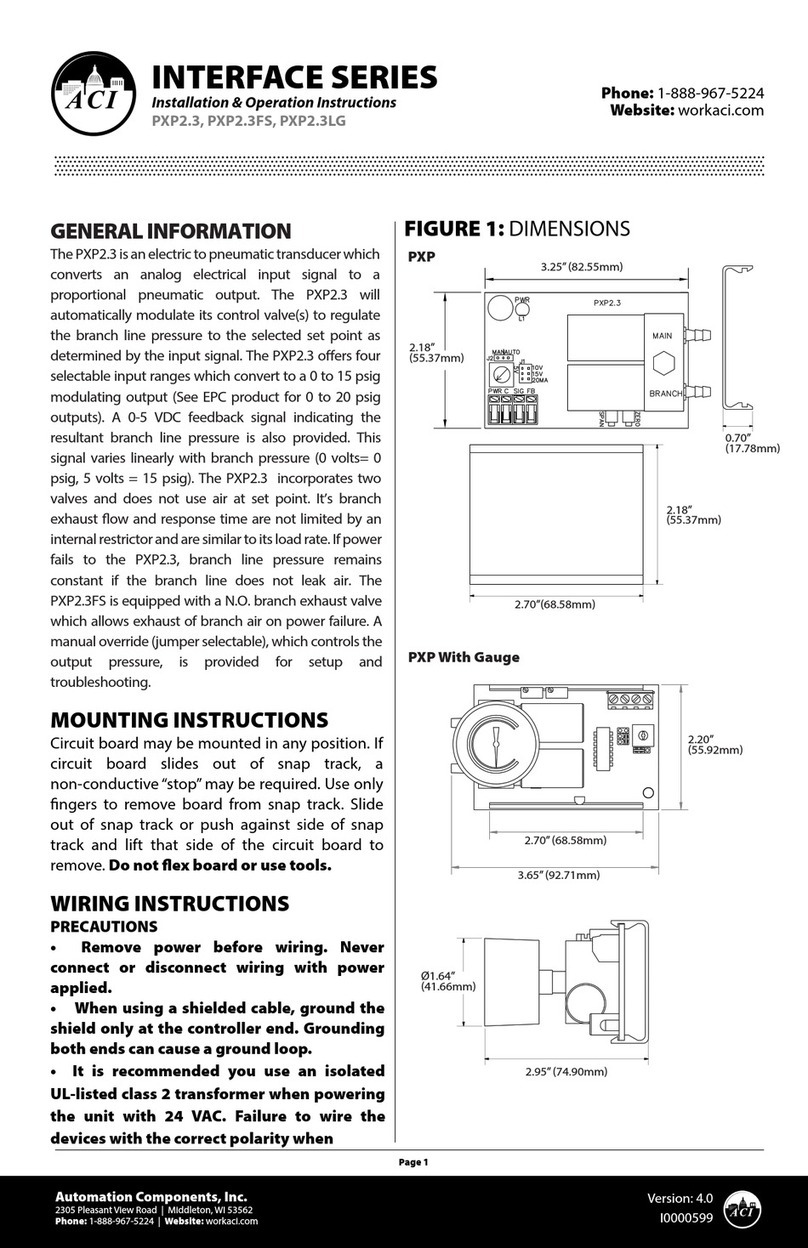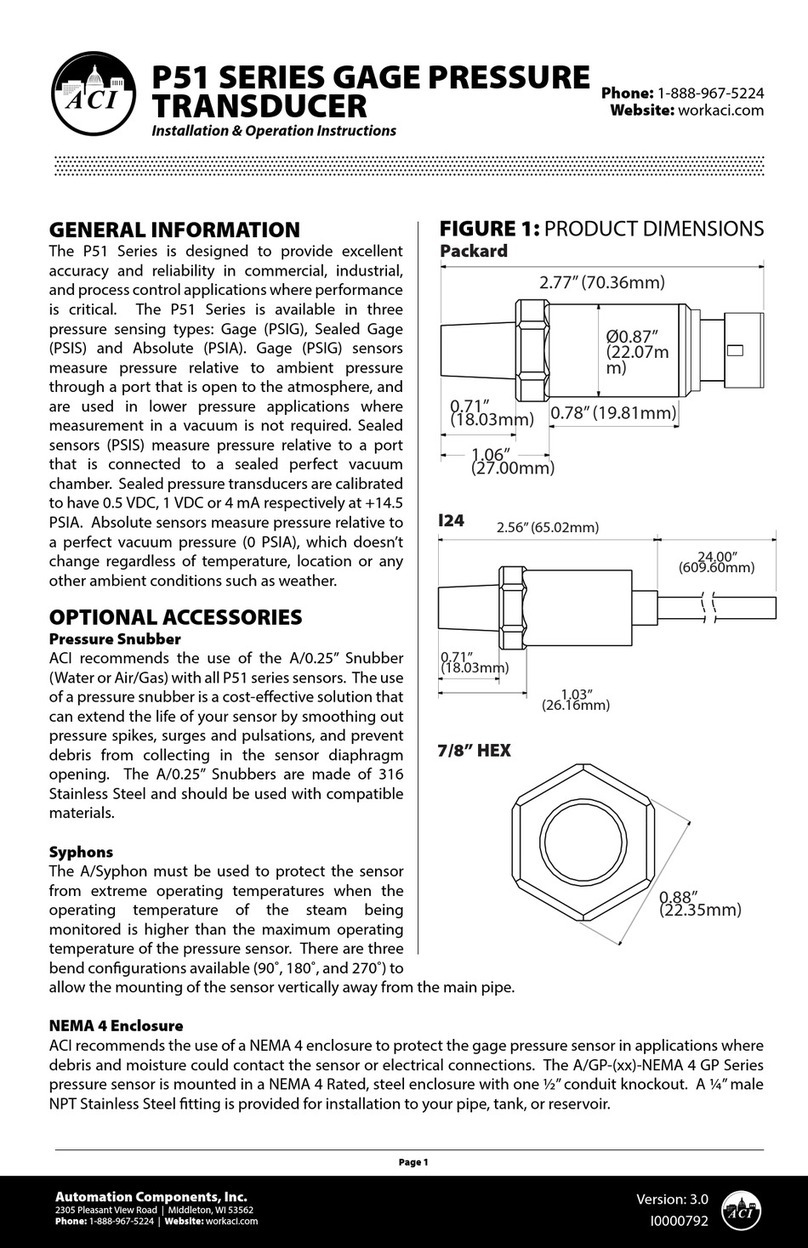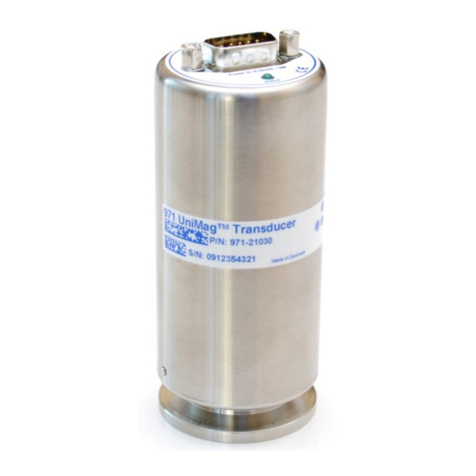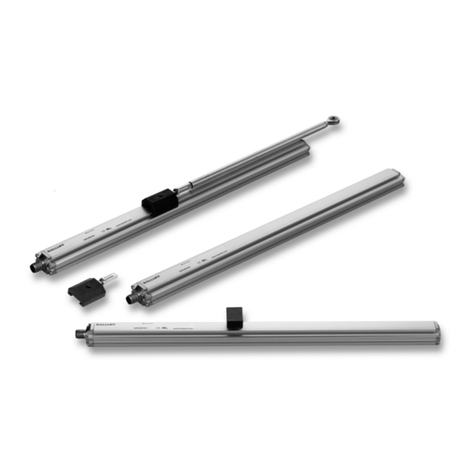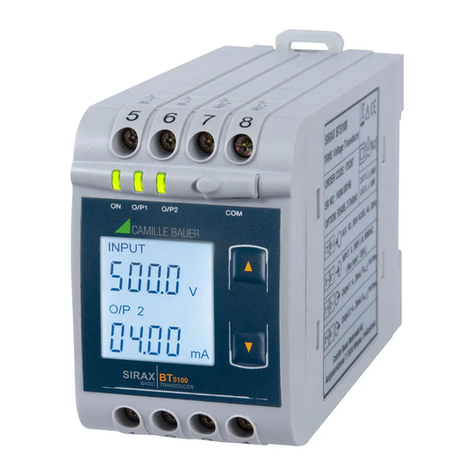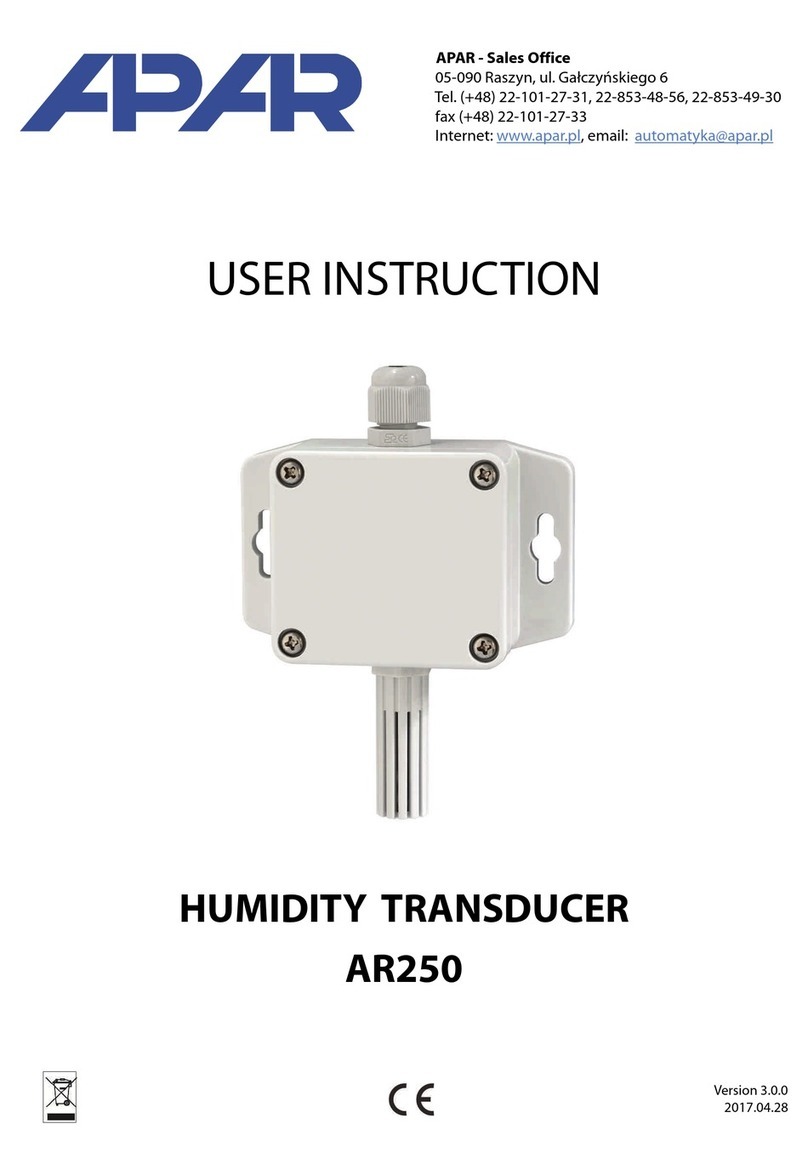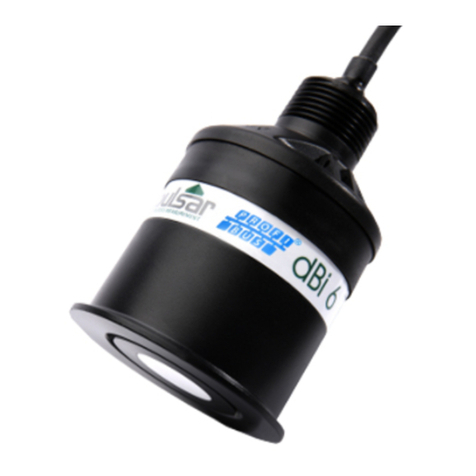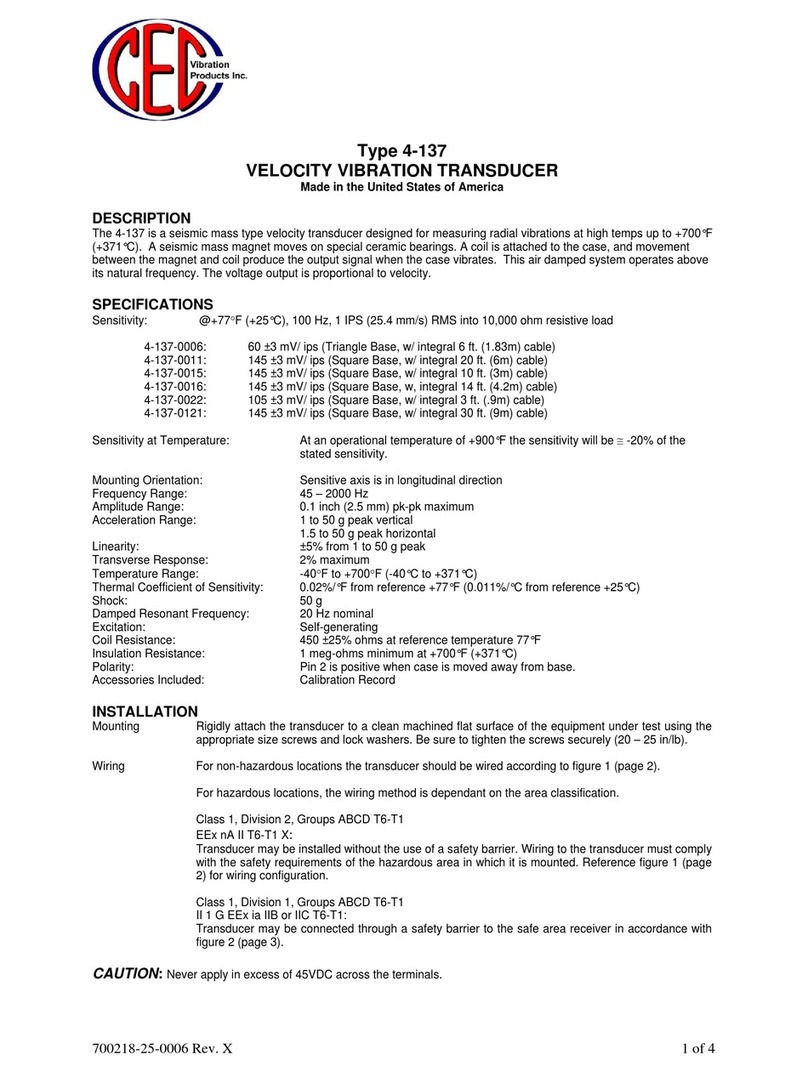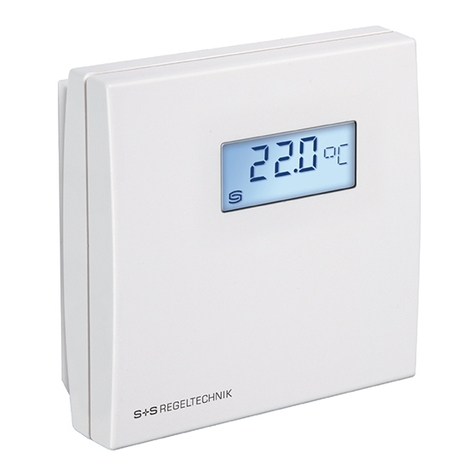aci ACCESS series Installation instructions

Automation Components, Inc.
2305 Pleasant View Road | Middleton, WI 53562
Phone: 1-888-967-5224 | Website: workaci.com
Page 1
Version: 4.0
I0000637
FIGURE 1: DIMENSIONS
INTERFACE SERIES
Installation & Operation Instructions
EPC2GB, EPC2FSB
Phone: 1-888-967-5224
Website: workaci.com
GENERAL INFORMATION
The EPC2 Series are electric to pneumatic
transducers which convert an analog input signal
to a proportional pneumatic output, modulating
its control valve(s) to regulate the branch line
pressure to the set point determined by the input
signal. The EPC2 series oers four selectable input
ranges. Output pressure ranges are jumper shunt
selectable and adjustable in all ranges. A feedback
signal indicating the resultant branch line pressure
is also provided. EPC2 Series is designed with
electrical terminals on one end and pneumatic
connections on the other, allowing for maximum
convenience in wiring and tubing installation
when panel mounted.
The EPC2 incorporates two
valves (one controls exhaust), does not bleed air at set
point, and has a 750 scim supply and exhaust. Its
branch exhaust ow and response time are not limited
by an internal restrictor and are similar to its load rate.
If power fails to the EPC2, branch line pressure remains
constant if the branch line does not leak air. The
EPC2FS shares the same specications as the EPC2
except its 3-way branch valve will exhaust branch line
air upon power failure.
MOUNTING INSTRUCTIONS
The EPC2 has 4 mounting holes, 2 located on the
bottom ange, and 2 on the top ange. Drill pilot
holes for the Mounting Screws(not supplied). Use
the enclosure ange as a guide. Mount the unit
vertically with the brass ttings pointing towards the ground. This ensures that any condensation that may
form in the tubing does not have an eect on the pressure sensor. If mounting the unit horizontally, care
must be taken to prevent moisture from building up in the sensor.
WIRING INSTRUCTIONS
PRECAUTIONS
• Remove power before wiring. Never connect or disconnect wiring with power applied.
• When using a shielded cable, ground the shield only at the controller end. Grounding both ends
can cause a ground loop.
• It is recommended you use an isolated UL-listed class 2 transformer when powering the unit
with 24 VAC. Failure to wire the devices with the correct polarity when sharing transformers may
result in damage to any device powered by the shared transformer.
• If the 24 VDC or 24VAC power is shared with devices that have coils such as relays, solenoids, or
other inductors, each coil must have an MOV, DC/AC Transorb, Transient Voltage Suppressor (ACI
Part: 142583), or diode placed across the coil or inductor. The cathode, or banded side of the DC
Transorb or diode, connects to the positive side of the power supply. Without these snubbers,
coils produce very large voltage spikes when de-energizing that can cause malfunction or
destruction of electronic circuits.
• All wiring must comply with all local and National Electric Codes.
ADJUSTMENT OF GAUGES
If installation requires adjustment of the gauge for proper reading of the face, turn the gauge no more than
½ turn in either direction. O-rings in the bottom of the gauge port will allow this without leakage.
Warranty does not include malfunction due to clogged valve. Main air port on EPC is ltered with the
supplied 80 – 100 micron integral-in-barb lter (Part # PN004). A 5 micron external in-line lter (Part #
PN021) is supplied with the EPC2LG. Periodically check the lter for contamination and ow reduction.
Replace if needed.
The surface between the manifold and pressure transducer is a pressure seal. Minimize stress between the
circuit board and the manifold by holding the manifold in one hand while installing pneumatic tubing
onto the ttings, and use care when removing tubing to avoid damaging ttings or moving manifold.
For optimum performance and reduced noise, the EPC2FS unit requires a branch air line capacity equal to
at least 25 feet of ¼”O.D. polyethylene tubing to operate without oscillation, and the EPC2 and EPC2LG unit
require a branch air line capacity equal to at least 15 feet of ¼”O.D. polyethylene tubing to operate without
oscillation.
CHECKOUT
With power o, select one of the four input signal combinations by moving the jumper shunt J1 identied
as “Input Signal Range Selector”. Select a preset pressure output range by moving jumper shunt J2
identied as “Pressure Output Range Selector”, or set custom range as described below.
SETTING CUSTOM OUTPUT PRESSURE RANGE
Verify the MAN/AUTO switch is in the AUTO position. In AUTO, the manual override pot is inactive, the
override contacts are open, and the analog input signal is supplying the set-point. The oset pot may be
adjusted to any desired oset between 0 and 14 psig. When in the MANUAL position, the override contacts
are closed, the oset pot is inactive and the manual override pot is supplying the set point (the analog
input signal is locked out). Supply power and the LED power indicator will light, but only measurement will
verify proper voltage.
1. Setting the minimum pressure. Make sure the signal connections are made and input is at
minimum. Place the manual override switch to the AUTO position. Adjust the OFFSET pot to the
desired pressure output, or until the actuator just starts to move. The adjustment range of the OFFSET
pot is 0 to 9 psig (62.05 kPa), 0 to 14 psig (96.53 kPa), or 0 to 19 psig (131 kPa) depending on the range
selected. Zero pot is factory set – DO NOT ADJUST.
2. Setting the maximum pressure. Now place the manual override switch to the MANUAL position.
Turn the MANUAL pot to produce the maximum branch line pressure available. Turn the SPAN pot for
the maximum desired output pressure, or until the actuator just stops. Be sure the MAIN air pressure
is at least 2 psig greater than the desired maximum branch output pressure.
3. Repeat. Because the OFFSET and SPAN pots are slightly interactive, steps 1 and 2 must be repeated
until the desired minimum and maximum pressures are repeatable. Since the MANUAL pot is set for
maximum pressure, it is only required that you switch the manual override switch back and forth from
MANUAL to AUTO when repeating steps 1 and 2. Calibration is usually accomplished in less than 3
iterations. Apply minimum and maximum input signals and measure response. Response between
the minimum and maximum values will be linear, therefore software algorithms are easy to derive.
The feedback signal range on all selections is 0 to 5 VDC and is proportional to the output pressure range
selected. The output and feedback signal will continue to vary proportionally if the input signal is
increased beyond its upper limit (if there is enough main air available).
The EPC2GB and EPC2GFSB incorporate two valves and is not a constant bleed controller. Its branch
exhaust ow and response time is not limited by any internal restrictor and is similar to its load rate. The
4.30in
109.22mm
4.44in
112.78mm
3.34in
84.90mm
EPC2GB and EPC2GFSB is ideal for long branch line runs, multiple actuators, and outside air dampers
because of it’s 750 scim capacity.
Note: If power to the EPC2GB is lost, the branch line control valve will close and it will maintain branch line
pressure (assuming no branch line leaks).
If power to the EPC2GFSB (Fail-Safe) is lost, the branch line 3-way valve will open and branch line pressure
will go to 0 psig (0 kPa)

FIGURE 2: WIRING
Automation Components, Inc.
2305 Pleasant View Road | Middleton, WI 53562
Phone: 1-888-967-5224 | Website: workaci.com
Page 2
Version: 4.0
I0000637
GENERAL INFORMATION
The EPC2 Series are electric to pneumatic
transducers which convert an analog input signal
to a proportional pneumatic output, modulating
its control valve(s) to regulate the branch line
pressure to the set point determined by the input
signal. The EPC2 series oers four selectable input
ranges. Output pressure ranges are jumper shunt
selectable and adjustable in all ranges. A feedback
signal indicating the resultant branch line pressure
is also provided. EPC2 Series is designed with
electrical terminals on one end and pneumatic
connections on the other, allowing for maximum
convenience in wiring and tubing installation
when panel mounted.
The EPC2 incorporates two
valves (one controls exhaust), does not bleed air at set
point, and has a 750 scim supply and exhaust. Its
branch exhaust ow and response time are not limited
by an internal restrictor and are similar to its load rate.
If power fails to the EPC2, branch line pressure remains
constant if the branch line does not leak air. The
EPC2FS shares the same specications as the EPC2
except its 3-way branch valve will exhaust branch line
air upon power failure.
MOUNTING INSTRUCTIONS
The EPC2 has 4 mounting holes, 2 located on the
bottom ange, and 2 on the top ange. Drill pilot
holes for the Mounting Screws(not supplied). Use
the enclosure ange as a guide. Mount the unit
vertically with the brass ttings pointing towards the ground. This ensures that any condensation that may
form in the tubing does not have an eect on the pressure sensor. If mounting the unit horizontally, care
must be taken to prevent moisture from building up in the sensor.
WIRING INSTRUCTIONS
PRECAUTIONS
• Remove power before wiring. Never connect or disconnect wiring with power applied.
• When using a shielded cable, ground the shield only at the controller end. Grounding both ends
can cause a ground loop.
• It is recommended you use an isolated UL-listed class 2 transformer when powering the unit
with 24 VAC. Failure to wire the devices with the correct polarity when sharing transformers may
result in damage to any device powered by the shared transformer.
• If the 24 VDC or 24VAC power is shared with devices that have coils such as relays, solenoids, or
other inductors, each coil must have an MOV, DC/AC Transorb, Transient Voltage Suppressor (ACI
Part: 142583), or diode placed across the coil or inductor. The cathode, or banded side of the DC
Transorb or diode, connects to the positive side of the power supply. Without these snubbers,
coils produce very large voltage spikes when de-energizing that can cause malfunction or
destruction of electronic circuits.
• All wiring must comply with all local and National Electric Codes.
J2
A
B
C
J1
10V
20MA
15V
5V
AUTO
L1
PWR
OFFSET
SPAN
OV OVPWR FBSIGC
0-10 PSI
0-15 PSI
0-20 PSI
MANUAL
0% 100%
MANUAL
MB
Analog (Current or Voltage)
to
Modulated Pressure
24 VDC/VAC
Power Supply
(+)
(-)
Analog Input
Signal
(+)
(-)
Branch Pressure
Feedback Signal
Override Feedback
(Dry Contact)
Manual Override Pot and
Manual/Auto Switch
Blue manifold
on FS models
Offset Pot - Set for minimum desired
pressure with minimum input signal
Span Pot - Set for maximum desired
pressure with maximum input signal
Zero Pot is Factory Set - Do not adjust
ADJUSTMENT OF GAUGES
If installation requires adjustment of the gauge for proper reading of the face, turn the gauge no more than
½ turn in either direction. O-rings in the bottom of the gauge port will allow this without leakage.
Warranty does not include malfunction due to clogged valve. Main air port on EPC is ltered with the
supplied 80 – 100 micron integral-in-barb lter (Part # PN004). A 5 micron external in-line lter (Part #
PN021) is supplied with the EPC2LG. Periodically check the lter for contamination and ow reduction.
Replace if needed.
The surface between the manifold and pressure transducer is a pressure seal. Minimize stress between the
circuit board and the manifold by holding the manifold in one hand while installing pneumatic tubing
onto the ttings, and use care when removing tubing to avoid damaging ttings or moving manifold.
For optimum performance and reduced noise, the EPC2FS unit requires a branch air line capacity equal to
at least 25 feet of ¼”O.D. polyethylene tubing to operate without oscillation, and the EPC2 and EPC2LG unit
require a branch air line capacity equal to at least 15 feet of ¼”O.D. polyethylene tubing to operate without
oscillation.
CHECKOUT
With power o, select one of the four input signal combinations by moving the jumper shunt J1 identied
as “Input Signal Range Selector”. Select a preset pressure output range by moving jumper shunt J2
identied as “Pressure Output Range Selector”, or set custom range as described below.
SETTING CUSTOM OUTPUT PRESSURE RANGE
Verify the MAN/AUTO switch is in the AUTO position. In AUTO, the manual override pot is inactive, the
override contacts are open, and the analog input signal is supplying the set-point. The oset pot may be
adjusted to any desired oset between 0 and 14 psig. When in the MANUAL position, the override contacts
are closed, the oset pot is inactive and the manual override pot is supplying the set point (the analog
input signal is locked out). Supply power and the LED power indicator will light, but only measurement will
verify proper voltage.
1. Setting the minimum pressure. Make sure the signal connections are made and input is at
minimum. Place the manual override switch to the AUTO position. Adjust the OFFSET pot to the
desired pressure output, or until the actuator just starts to move. The adjustment range of the OFFSET
pot is 0 to 9 psig (62.05 kPa), 0 to 14 psig (96.53 kPa), or 0 to 19 psig (131 kPa) depending on the range
selected. Zero pot is factory set – DO NOT ADJUST.
2. Setting the maximum pressure. Now place the manual override switch to the MANUAL position.
Turn the MANUAL pot to produce the maximum branch line pressure available. Turn the SPAN pot for
the maximum desired output pressure, or until the actuator just stops. Be sure the MAIN air pressure
is at least 2 psig greater than the desired maximum branch output pressure.
3. Repeat. Because the OFFSET and SPAN pots are slightly interactive, steps 1 and 2 must be repeated
until the desired minimum and maximum pressures are repeatable. Since the MANUAL pot is set for
maximum pressure, it is only required that you switch the manual override switch back and forth from
MANUAL to AUTO when repeating steps 1 and 2. Calibration is usually accomplished in less than 3
iterations. Apply minimum and maximum input signals and measure response. Response between
the minimum and maximum values will be linear, therefore software algorithms are easy to derive.
The feedback signal range on all selections is 0 to 5 VDC and is proportional to the output pressure range
selected. The output and feedback signal will continue to vary proportionally if the input signal is
increased beyond its upper limit (if there is enough main air available).
The EPC2GB and EPC2GFSB incorporate two valves and is not a constant bleed controller. Its branch
exhaust ow and response time is not limited by any internal restrictor and is similar to its load rate. The
Main Air Supply
Branch Line Output
FIGURE 3: PNEUMATIC
TUBING INSTALLATION
A
B
C
J2
0-10 psi
A
B
C
J2
0-15 psi
A
B
C
J2
0-20 psi
10V
15V
J1
5V
20mA
0-5 VDC
10V
15V
J1
5V
20mA
0-10 VDC
10V
15V
J1
5V
20mA
0-15 VDC
10V
15V
J1
5V
20mA
0-20mA
Pressure Output Range Selector Signal Input Range Selector
MAIN
BRANCH
REGULATOR
AIR
COMPRESSOR
DAMPER
Min Tubing Length:
EPC2:15ft (4.572m)
EPC2FS: 25ft (7.62m)
EPC2GB and EPC2GFSB is ideal for long branch line runs, multiple actuators, and outside air dampers
because of it’s 750 scim capacity.
Note: If power to the EPC2GB is lost, the branch line control valve will close and it will maintain branch line
pressure (assuming no branch line leaks).
If power to the EPC2GFSB (Fail-Safe) is lost, the branch line 3-way valve will open and branch line pressure
will go to 0 psig (0 kPa)

Automation Components, Inc.
2305 Pleasant View Road | Middleton, WI 53562
Phone: 1-888-967-5224 | Website: workaci.com
Page 3
Version: 4.0
I0000637
GENERAL INFORMATION
The EPC2 Series are electric to pneumatic
transducers which convert an analog input signal
to a proportional pneumatic output, modulating
its control valve(s) to regulate the branch line
pressure to the set point determined by the input
signal. The EPC2 series oers four selectable input
ranges. Output pressure ranges are jumper shunt
selectable and adjustable in all ranges. A feedback
signal indicating the resultant branch line pressure
is also provided. EPC2 Series is designed with
electrical terminals on one end and pneumatic
connections on the other, allowing for maximum
convenience in wiring and tubing installation
when panel mounted.
The EPC2 incorporates two
valves (one controls exhaust), does not bleed air at set
point, and has a 750 scim supply and exhaust. Its
branch exhaust ow and response time are not limited
by an internal restrictor and are similar to its load rate.
If power fails to the EPC2, branch line pressure remains
constant if the branch line does not leak air. The
EPC2FS shares the same specications as the EPC2
except its 3-way branch valve will exhaust branch line
air upon power failure.
MOUNTING INSTRUCTIONS
The EPC2 has 4 mounting holes, 2 located on the
bottom ange, and 2 on the top ange. Drill pilot
holes for the Mounting Screws(not supplied). Use
the enclosure ange as a guide. Mount the unit
vertically with the brass ttings pointing towards the ground. This ensures that any condensation that may
form in the tubing does not have an eect on the pressure sensor. If mounting the unit horizontally, care
must be taken to prevent moisture from building up in the sensor.
WIRING INSTRUCTIONS
PRECAUTIONS
• Remove power before wiring. Never connect or disconnect wiring with power applied.
• When using a shielded cable, ground the shield only at the controller end. Grounding both ends
can cause a ground loop.
• It is recommended you use an isolated UL-listed class 2 transformer when powering the unit
with 24 VAC. Failure to wire the devices with the correct polarity when sharing transformers may
result in damage to any device powered by the shared transformer.
• If the 24 VDC or 24VAC power is shared with devices that have coils such as relays, solenoids, or
other inductors, each coil must have an MOV, DC/AC Transorb, Transient Voltage Suppressor (ACI
Part: 142583), or diode placed across the coil or inductor. The cathode, or banded side of the DC
Transorb or diode, connects to the positive side of the power supply. Without these snubbers,
coils produce very large voltage spikes when de-energizing that can cause malfunction or
destruction of electronic circuits.
• All wiring must comply with all local and National Electric Codes.
ADJUSTMENT OF GAUGES
If installation requires adjustment of the gauge for proper reading of the face, turn the gauge no more than
½ turn in either direction. O-rings in the bottom of the gauge port will allow this without leakage.
Warranty does not include malfunction due to clogged valve. Main air port on EPC is ltered with the
supplied 80 – 100 micron integral-in-barb lter (Part # PN004). A 5 micron external in-line lter (Part #
PN021) is supplied with the EPC2LG. Periodically check the lter for contamination and ow reduction.
Replace if needed.
The surface between the manifold and pressure transducer is a pressure seal. Minimize stress between the
circuit board and the manifold by holding the manifold in one hand while installing pneumatic tubing
onto the ttings, and use care when removing tubing to avoid damaging ttings or moving manifold.
For optimum performance and reduced noise, the EPC2FS unit requires a branch air line capacity equal to
at least 25 feet of ¼”O.D. polyethylene tubing to operate without oscillation, and the EPC2 and EPC2LG unit
require a branch air line capacity equal to at least 15 feet of ¼”O.D. polyethylene tubing to operate without
oscillation.
CHECKOUT
With power o, select one of the four input signal combinations by moving the jumper shunt J1 identied
as “Input Signal Range Selector”. Select a preset pressure output range by moving jumper shunt J2
identied as “Pressure Output Range Selector”, or set custom range as described below.
SETTING CUSTOM OUTPUT PRESSURE RANGE
Verify the MAN/AUTO switch is in the AUTO position. In AUTO, the manual override pot is inactive, the
override contacts are open, and the analog input signal is supplying the set-point. The oset pot may be
adjusted to any desired oset between 0 and 14 psig. When in the MANUAL position, the override contacts
are closed, the oset pot is inactive and the manual override pot is supplying the set point (the analog
input signal is locked out). Supply power and the LED power indicator will light, but only measurement will
verify proper voltage.
1. Setting the minimum pressure. Make sure the signal connections are made and input is at
minimum. Place the manual override switch to the AUTO position. Adjust the OFFSET pot to the
desired pressure output, or until the actuator just starts to move. The adjustment range of the OFFSET
pot is 0 to 9 psig (62.05 kPa), 0 to 14 psig (96.53 kPa), or 0 to 19 psig (131 kPa) depending on the range
selected. Zero pot is factory set – DO NOT ADJUST.
2. Setting the maximum pressure. Now place the manual override switch to the MANUAL position.
Turn the MANUAL pot to produce the maximum branch line pressure available. Turn the SPAN pot for
the maximum desired output pressure, or until the actuator just stops. Be sure the MAIN air pressure
is at least 2 psig greater than the desired maximum branch output pressure.
3. Repeat. Because the OFFSET and SPAN pots are slightly interactive, steps 1 and 2 must be repeated
until the desired minimum and maximum pressures are repeatable. Since the MANUAL pot is set for
maximum pressure, it is only required that you switch the manual override switch back and forth from
MANUAL to AUTO when repeating steps 1 and 2. Calibration is usually accomplished in less than 3
iterations. Apply minimum and maximum input signals and measure response. Response between
the minimum and maximum values will be linear, therefore software algorithms are easy to derive.
The feedback signal range on all selections is 0 to 5 VDC and is proportional to the output pressure range
selected. The output and feedback signal will continue to vary proportionally if the input signal is
increased beyond its upper limit (if there is enough main air available).
The EPC2GB and EPC2GFSB incorporate two valves and is not a constant bleed controller. Its branch
exhaust ow and response time is not limited by any internal restrictor and is similar to its load rate. The
EPC2GB and EPC2GFSB is ideal for long branch line runs, multiple actuators, and outside air dampers
because of it’s 750 scim capacity.
Note: If power to the EPC2GB is lost, the branch line control valve will close and it will maintain branch line
pressure (assuming no branch line leaks).
If power to the EPC2GFSB (Fail-Safe) is lost, the branch line 3-way valve will open and branch line pressure
will go to 0 psig (0 kPa)

PRODUCT SPECIFICATIONS
Automation Components, Inc.
2305 Pleasant View Road | Middleton, WI 53562
Phone: 1-888-967-5224 | Website: workaci.com
Page 4
Version: 4.0
I0000637
GENERAL INFORMATION
The EPC2 Series are electric to pneumatic
transducers which convert an analog input signal
to a proportional pneumatic output, modulating
its control valve(s) to regulate the branch line
pressure to the set point determined by the input
signal. The EPC2 series oers four selectable input
ranges. Output pressure ranges are jumper shunt
selectable and adjustable in all ranges. A feedback
signal indicating the resultant branch line pressure
is also provided. EPC2 Series is designed with
electrical terminals on one end and pneumatic
connections on the other, allowing for maximum
convenience in wiring and tubing installation
when panel mounted.
The EPC2 incorporates two
valves (one controls exhaust), does not bleed air at set
point, and has a 750 scim supply and exhaust. Its
branch exhaust ow and response time are not limited
by an internal restrictor and are similar to its load rate.
If power fails to the EPC2, branch line pressure remains
constant if the branch line does not leak air. The
EPC2FS shares the same specications as the EPC2
except its 3-way branch valve will exhaust branch line
air upon power failure.
MOUNTING INSTRUCTIONS
The EPC2 has 4 mounting holes, 2 located on the
bottom ange, and 2 on the top ange. Drill pilot
holes for the Mounting Screws(not supplied). Use
the enclosure ange as a guide. Mount the unit
vertically with the brass ttings pointing towards the ground. This ensures that any condensation that may
form in the tubing does not have an eect on the pressure sensor. If mounting the unit horizontally, care
must be taken to prevent moisture from building up in the sensor.
WIRING INSTRUCTIONS
PRECAUTIONS
• Remove power before wiring. Never connect or disconnect wiring with power applied.
• When using a shielded cable, ground the shield only at the controller end. Grounding both ends
can cause a ground loop.
• It is recommended you use an isolated UL-listed class 2 transformer when powering the unit
with 24 VAC. Failure to wire the devices with the correct polarity when sharing transformers may
result in damage to any device powered by the shared transformer.
• If the 24 VDC or 24VAC power is shared with devices that have coils such as relays, solenoids, or
other inductors, each coil must have an MOV, DC/AC Transorb, Transient Voltage Suppressor (ACI
Part: 142583), or diode placed across the coil or inductor. The cathode, or banded side of the DC
Transorb or diode, connects to the positive side of the power supply. Without these snubbers,
coils produce very large voltage spikes when de-energizing that can cause malfunction or
destruction of electronic circuits.
• All wiring must comply with all local and National Electric Codes.
WARRANTY
The EPC Series is covered by ACI’s Two (2) Year Limited Warranty, which is located in the front of ACI’S SENSORS &
TRANSMITTERS CATALOG or can be found on ACI’s website: www.workaci.com.
24 VAC (+/-10%), 50 or 60Hz, 24 VDC (+10%/- 5%)
180 mA maximum, 200 mA on fail safe models
0-5 VDC @ innite | 0-10 VDC @ innite | 0-15 VDC @ innite | 0-20 mA
/ 250
0-5 VDC = Output Span
Field Calibration Possible: 0 to 20 psig (0-138 kPa) maximum
0-10 psig (0-68.95 kPa), 0-15 psig (0-103.43 kPa) or 0-20 psig (137.9 kPa)
Maximum 28 psig (193.06 kPa), minimum 22 psig (151.69 kPa)
41 SCIM (0.6419 Liters)
MAN function = output can be varied | AUTO function = output is controlled
from input signal
Dry Contacts: 24 VDC/VAC @ 1A maximum, N.O. in AUTO operation (Optional: N.O.
in MAN operation)
Supply valves @ 25 psig (172.38 kPa) main/20 psig (137.9 kPa) out, 750 scim
Branch Line requires 2 in / 33.78 cm (min.) | Min. 25 ft of 1/4” O.D. poly
branch tubing
Furnished with integral-in-barb 80-100 micron lter (Part # PN004)
90° Pluggable Screw Terminal Blocks | 16 (1.31 mm) to 26 AWG (0.129 mm)
0.5 Nm (Minimum); 0.6 Nm (Maximum)
1/4" O.D. nominal (1/8” I.D.) polyethylene
Removeable brass ttings for Main & Branch in machined manifold, Plugged
1/8-27-FNPT gauge port
35 to 120°F (1.7 to 48.9°C)
10 to 95% non-condensing
-20 to 150°F (-28.9 to 65.5°C)
NON-SPECIFIC INFORMATION
Supply Voltage:
Supply Current:
Input Signal Source (@
Impedance):
Feedback Signal Output Range:
Output Pressure Range:
Output Pressure Range-Jumper
Selectable:
Air Supply Pressure:
Air Consumption:
Manual / Auto Override Switch:
Manual / Auto Override
Feedback Output:
Air Flow:
Filtering:
Connections | Wire Size:
Terminal Block Torque Rating:
Connections | Pneumatic
Tubing Size-Type:
Pneumatic Fitting:
Operating Temperature Range:
Operating Humidity Range:
Storage Temperature:
ADJUSTMENT OF GAUGES
If installation requires adjustment of the gauge for proper reading of the face, turn the gauge no more than
½ turn in either direction. O-rings in the bottom of the gauge port will allow this without leakage.
Warranty does not include malfunction due to clogged valve. Main air port on EPC is ltered with the
supplied 80 – 100 micron integral-in-barb lter (Part # PN004). A 5 micron external in-line lter (Part #
PN021) is supplied with the EPC2LG. Periodically check the lter for contamination and ow reduction.
Replace if needed.
The surface between the manifold and pressure transducer is a pressure seal. Minimize stress between the
circuit board and the manifold by holding the manifold in one hand while installing pneumatic tubing
onto the ttings, and use care when removing tubing to avoid damaging ttings or moving manifold.
For optimum performance and reduced noise, the EPC2FS unit requires a branch air line capacity equal to
at least 25 feet of ¼”O.D. polyethylene tubing to operate without oscillation, and the EPC2 and EPC2LG unit
require a branch air line capacity equal to at least 15 feet of ¼”O.D. polyethylene tubing to operate without
oscillation.
CHECKOUT
With power o, select one of the four input signal combinations by moving the jumper shunt J1 identied
as “Input Signal Range Selector”. Select a preset pressure output range by moving jumper shunt J2
identied as “Pressure Output Range Selector”, or set custom range as described below.
SETTING CUSTOM OUTPUT PRESSURE RANGE
Verify the MAN/AUTO switch is in the AUTO position. In AUTO, the manual override pot is inactive, the
override contacts are open, and the analog input signal is supplying the set-point. The oset pot may be
adjusted to any desired oset between 0 and 14 psig. When in the MANUAL position, the override contacts
are closed, the oset pot is inactive and the manual override pot is supplying the set point (the analog
input signal is locked out). Supply power and the LED power indicator will light, but only measurement will
verify proper voltage.
1. Setting the minimum pressure. Make sure the signal connections are made and input is at
minimum. Place the manual override switch to the AUTO position. Adjust the OFFSET pot to the
desired pressure output, or until the actuator just starts to move. The adjustment range of the OFFSET
pot is 0 to 9 psig (62.05 kPa), 0 to 14 psig (96.53 kPa), or 0 to 19 psig (131 kPa) depending on the range
selected. Zero pot is factory set – DO NOT ADJUST.
2. Setting the maximum pressure. Now place the manual override switch to the MANUAL position.
Turn the MANUAL pot to produce the maximum branch line pressure available. Turn the SPAN pot for
the maximum desired output pressure, or until the actuator just stops. Be sure the MAIN air pressure
is at least 2 psig greater than the desired maximum branch output pressure.
3. Repeat. Because the OFFSET and SPAN pots are slightly interactive, steps 1 and 2 must be repeated
until the desired minimum and maximum pressures are repeatable. Since the MANUAL pot is set for
maximum pressure, it is only required that you switch the manual override switch back and forth from
MANUAL to AUTO when repeating steps 1 and 2. Calibration is usually accomplished in less than 3
iterations. Apply minimum and maximum input signals and measure response. Response between
the minimum and maximum values will be linear, therefore software algorithms are easy to derive.
The feedback signal range on all selections is 0 to 5 VDC and is proportional to the output pressure range
selected. The output and feedback signal will continue to vary proportionally if the input signal is
increased beyond its upper limit (if there is enough main air available).
The EPC2GB and EPC2GFSB incorporate two valves and is not a constant bleed controller. Its branch
exhaust ow and response time is not limited by any internal restrictor and is similar to its load rate. The
EPC2GB and EPC2GFSB is ideal for long branch line runs, multiple actuators, and outside air dampers
because of it’s 750 scim capacity.
Note: If power to the EPC2GB is lost, the branch line control valve will close and it will maintain branch line
pressure (assuming no branch line leaks).
If power to the EPC2GFSB (Fail-Safe) is lost, the branch line 3-way valve will open and branch line pressure
will go to 0 psig (0 kPa)
Other manuals for ACCESS series
16
This manual suits for next models
5
Other aci Transducer manuals
Popular Transducer manuals by other brands
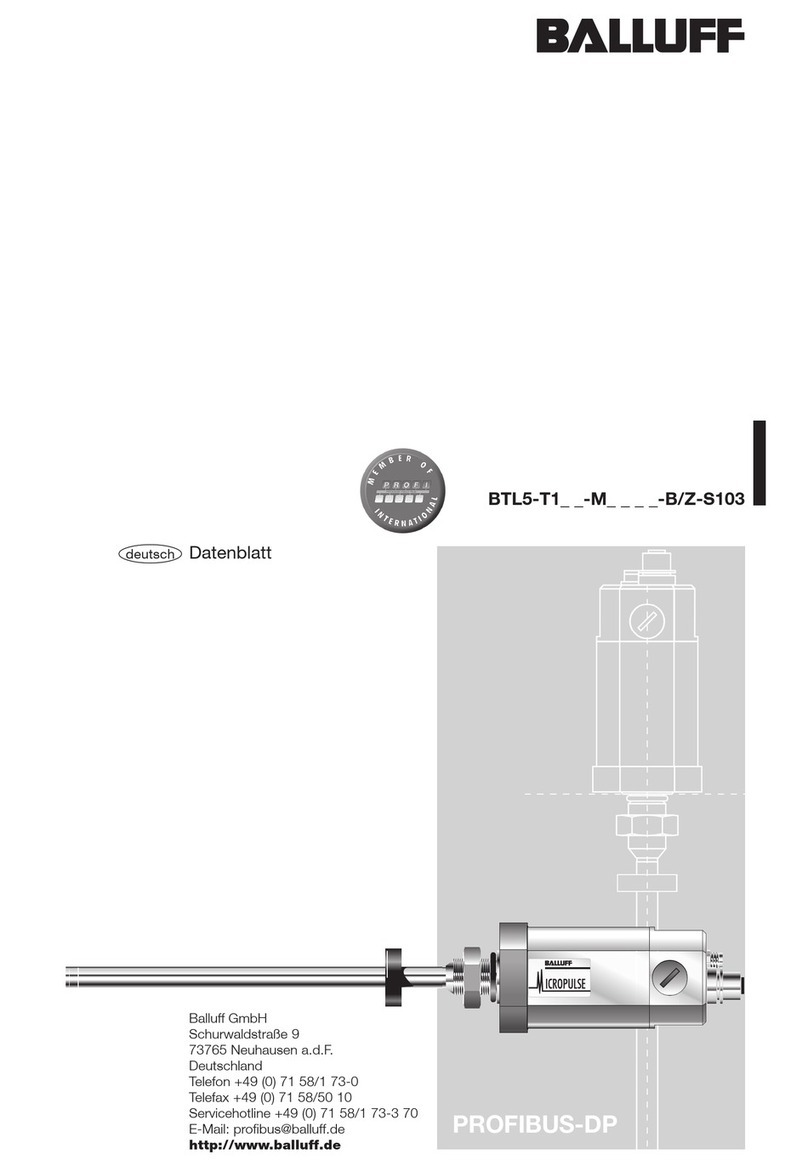
Balluff
Balluff BTL5-T1 Series datasheet
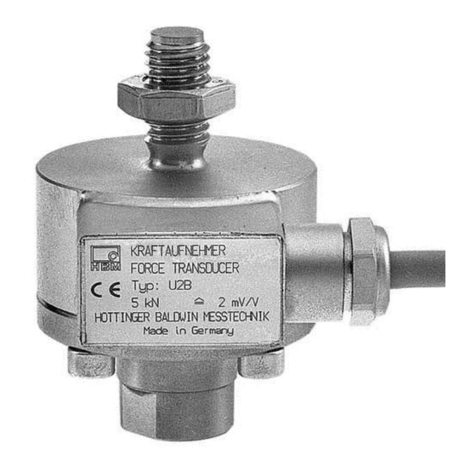
HBM
HBM U2B Mounting instructions
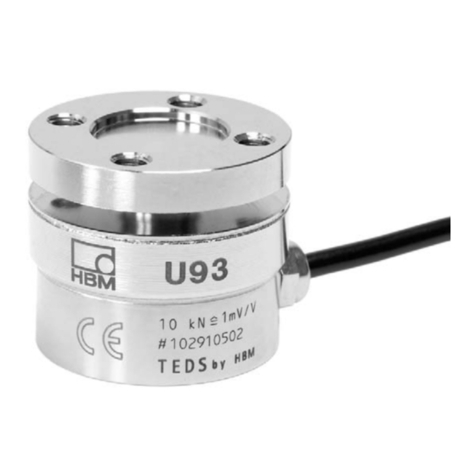
HBM
HBM U93 operating instructions
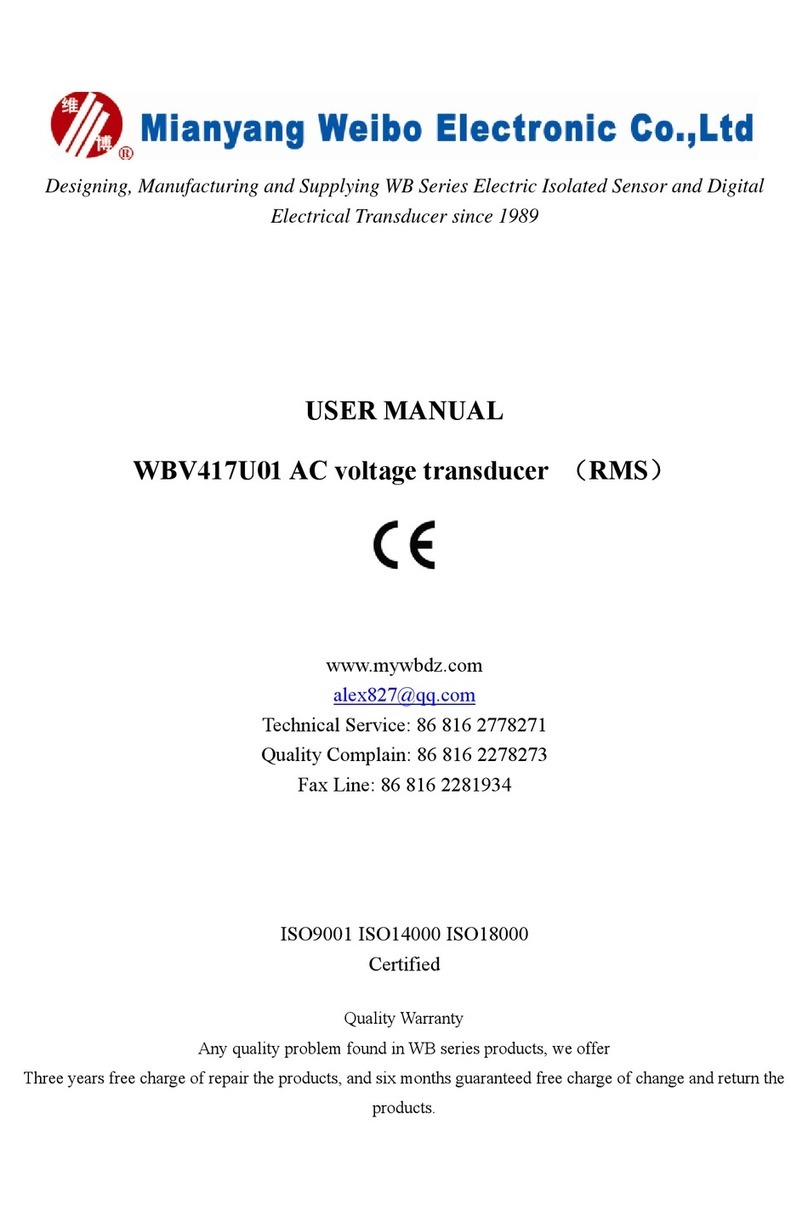
Mianyang Weibo Electronic
Mianyang Weibo Electronic WBV417U01 user manual
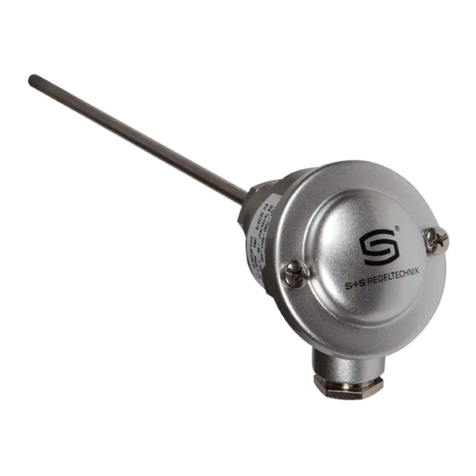
S+S Regeltechnik
S+S Regeltechnik THERMASGARD TM54 Series Operating Instructions, Mounting & Installation
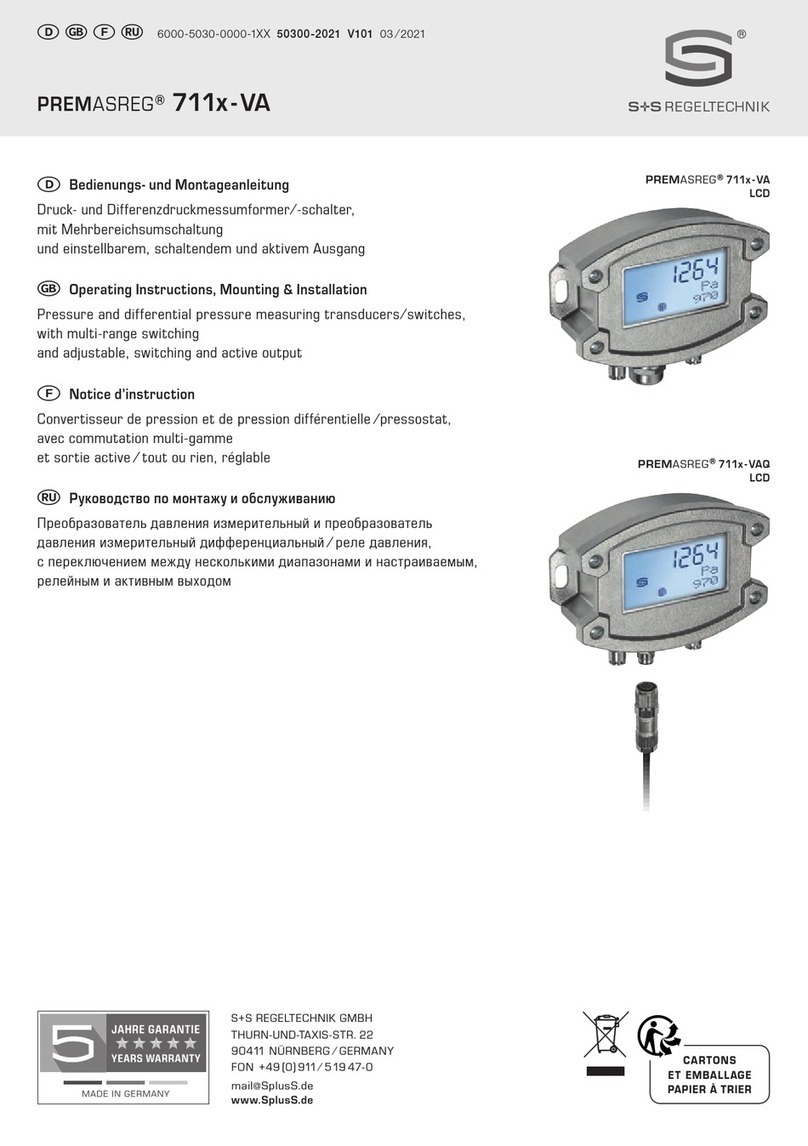
S+S Regeltechnik
S+S Regeltechnik PREMASREG 711x-VA Series Operating Instructions, Mounting & Installation
